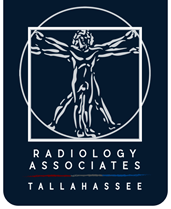Venous Doppler
Venous ultrasound uses sound waves to produce images of the veins in the body. It is commonly used to search for blood clots, especially in the veins of the leg – a condition often referred to as deep vein thrombosis. Ultrasound does not use ionizing radiation and has no known harmful effects.
Learn More About Venous Doppler
Venous ultrasound provides pictures of the veins throughout the body. Ultrasound examinations do not use ionizing radiation (as used in x-rays), thus there is no radiation exposure to the patient. Because ultrasound images are captured in real-time, they can show the structure and movement of the body’s internal organs, as well as blood flowing through blood vessels.
Doppler ultrasound, also called color Doppler ultrasonography, is a special ultrasound technique that allows the physician to see and evaluate blood flow through arteries and veins in the abdomen, arms, legs, neck and/or brain (in infants and children) or within various body organs such as the liver or kidney. It can detect diseased vessels and identify a wide variety of changing conditions, enabling your doctor to make a quick and accurate diagnosis.
You should wear comfortable, loose-fitting clothing for your ultrasound exam. You may need to remove all clothing and jewelry in the area to be examined.
You may be asked to wear a gown during the procedure.
A period of fasting is necessary only if you are to have an examination of veins in your abdomen. In this case, you will probably be asked not to ingest any food or fluids except water for six to eight hours ahead of time. Otherwise, there is no other special preparation for a venous ultrasound.
One of our board-certified Radiologists will interpret your exam and send a report to your physician within 5 business days. Contact your referring physician for any information pertaining to the findings.
Typically your referring physician will schedule an appointment for you. If you have been asked to schedule the appointment yourself, please have your physician’s order and any pre-authorization information required by your insurance or health plan provider in hand, and call 850-878-4127.
Ultrasound examinations are painless and easily tolerated by most patients.
After you are positioned on the examination table, the sonographer will apply some warm water-based gel on your skin and then place the transducer firmly against your body, moving it back and forth over the area of interest until the desired images are captured. There is usually no discomfort from pressure as the transducer is pressed against the area being examined.
If scanning is performed over an area of tenderness, you may feel pressure or minor pain from the transducer.
If a Doppler ultrasound study is performed, you may actually hear pulse-like sounds that change in pitch as the blood flow is monitored and measured.
Once the imaging is complete, the clear ultrasound gel will be wiped off your skin. Any portions that are not wiped off will dry quickly. The ultrasound gel does not usually stain or discolor clothing.
After an ultrasound examination, you should be able to resume your normal activities immediately.
Venous ultrasound helps to detect blood clots in the veins of the legs before they become dislodged and pass to the lungs. It can also show the movement of blood within blood vessels.
Compared to venography, which requires injecting contrast material into a vein, venous ultrasound is accurate for detecting blood clots in the veins of the thigh down to the knee. In the calf, because the veins become very small, ultrasound is less accurate. However, potentially dangerous venous clots are typically lodged in the larger veins. For standard diagnostic ultrasound, there are no known harmful effects on humans.
For more information on this or other procedures, please visit radiologyinfo.org
